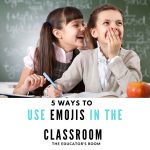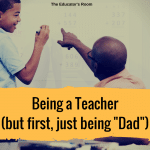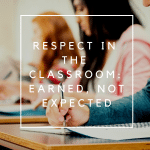Overview:
Curating and cultivating content mastery for learners with special education services requires a multifaceted approach that embraces individual differences, employs evidence-based practices, and fosters collaboration among stakeholders.
Curating and cultivating mastery is like planting seeds in a garden; it requires patience, care, and a keen eye for nurturing potential. Individuals with Disabilities Education Act (IDEA) requires special education services to support learners in three specific areas: advanced educational opportunities, employment, and increased independence. As a special education teacher, As a Teacher of the Deaf, I had the opportunity to provide personalized transformative learning opportunities and approaches that empower learners with diverse needs to thrive in the educational environment. Picture learners blossoming in the learning environment with key strategies and insights for building mastery of academic content. They would come alive and thrive, right?
The one-size-fits-all approach is trash when every learner possesses brilliance that can be leveraged to overcome challenges and engage in various learning opportunities. If we truly want learners to thrive, It’s essential to customize instruction to meet individual needs. We must identify specific areas of strength and areas for growth in the content. Design individualized learning plans that target learners’ needs, preferences, and learning styles to make concepts more tangible and accessible. Let’s explore three key strategies and insights that can help us make content more tangible and accessible for our learners with special education services.
Structured Instruction for Mastery
Structured instruction is the implementation of explicit teaching of foundational skills and concepts. In collaboration with multi-sensory learning and approaches learners’ different senses are appealed to increasing engagement in instruction. When we incorporate multiple means of engagement in the structured instruction process, we scaffold learning experiences and provide ample opportunities for practice and reinforcement to solidify skills. For instance, incorporate activities that involve sight, sound, touch, and movement to reinforce concepts. In reading instruction, this is implementing a structured literacy approach that systematically teaches the relationship between sounds and letters, decoding, encoding, and comprehension skills.
Provide explicit instruction in phonemic awareness, phonics, fluency, vocabulary, and comprehension strategies. In math, this can include breaking down complex concepts into manageable steps, offering systematic instruction in problem-solving strategies, and providing ample opportunities for guided practice and feedback. Utilize manipulatives, visual aids, interactive technology, and hands-on activities to make learning more concrete and meaningful for learners with diverse learning profiles.
Assistive Technology for Mastery
Leverage assistive technology tools to support learners with diverse needs in content.
Options such as text-to-speech software, speech-to-text tools, word prediction programs, graphic organizers, and audiobooks provide alternative means of accessing and expressing information within language and literacy. These tools can empower learners to overcome barriers within the content and enhance their independence. Math apps, interactive simulations, digital manipulatives, and screen readers provide alternative means of accessing and engaging with math content. Empower learners to use technology as a tool for problem-solving, visualization, and self-expression in math.
Real-World Application
Connect concepts to real-world contexts and applications in the classroom to enhance relevance and motivation. Encourage learners to apply skills in meaningful contexts, such as budgeting, measurement, time-telling, and spatial reasoning, to foster deeper understanding and transfer of learning. Integrate vocabulary instruction across content areas and embed opportunities for vocabulary development within authentic contexts. Teach vocabulary words explicitly, provide multiple exposures to target words, and offer opportunities for meaningful application and practice. Encourage learners to use newly acquired vocabulary in discussions, writing assignments, and daily interactions. When we explore everyday situations, practical problems, and authentic scenarios that resonate with learners, we ensure instruction appeals to their interests, experiences, and independence.
By embracing these strategies—structured instruction, assistive technology, and real-world application—we lay the foundation for the effective implementation of IDEA, empowering learners with diverse needs to thrive in their educational journey. Just as a gardener tends to their plants with care and precision, we must nurture the minds of our learners, cultivating an environment where every seed of brilliance can blossom.
Curating and Cultivating Mastery
Curating and cultivating content mastery for learners with special education services requires a multifaceted approach that embraces individual differences, employs evidence-based practices, and fosters collaboration among stakeholders. By implementing personalized instruction, multisensory approaches, structured instructional practices, visual supports, and assistive technology, we can empower learners to unlock their full potential and embark on a journey of lifelong learning, independence, and employment success. Together, let’s ensure that every learner has the opportunity to thrive in the learning environment and beyond, regardless of their unique learning needs.
Felicia Rutledge, Ph.D. serves as the Director of Nevada Special Education Technology Assistance Project at the University of Nevada, Reno, supporting educators with the implementation of tiered supports. She is a special education consultant & coach. Her leadership began in the classroom over 10 years ago serving students who are Deaf/Hard of Hearing and their families. Dr. Rutledge is an Edu-activist for wellness, Deaf Culture, learners with diverse needs, and healing-centered, culturally affirming, relevant cultures and climates. She is a devoted mother committed to learner achievement, supporting families, human talent development, and the implementation of systems that are rooted in equity, access, joy, brilliance, and liberation. She is also a Teach Plus Nevada Senior Policy Fellow and a Nevada Succeeds InspirEd Global Fellowship Alumna.






